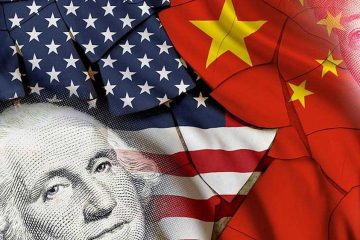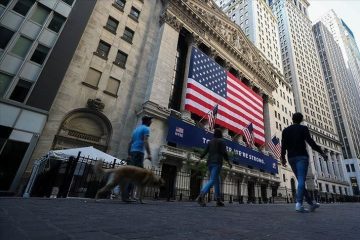Denmark’s biggest bank reports on its Estonian shambles
“THE bank has clearly failed to live up to its responsibility,” said Ole Andersen, chairman of Danske Bank, on September 19th. Well, indeed. The findings of an inquiry into the laundering of money, much of it from Russia, through Danske’s Estonian branch are sobering. The euro amount rinsed through the branch’s books runs to 12 digits and Danske missed chance after chance to stop the sluice. To no one’s surprise its chief executive, Thomas Borgen, has resigned.
Denmark’s biggest bank had already admitted doing too little to prevent the abuse of its branch between 2007, when it bought Finland’s Sampo Bank, the unit’s owner, and 2015. An 87-page report by Bruun & Hjejle, a law firm, both tries to quantify the suspicious activity and traces how Danske’s anti-laundering procedures went so catastrophically wrong.
The main conduit was the branch’s “non-resident portfolio”, comprising about 10,000 accounts, of which 3,000-4,000 were open at any one time. The branch also housed another 5,000 non-residents’ accounts. Starting with the fishiest, the investigators have examined 6,200 accounts and deem “the vast majority” to be suspicious. By contrast, the branch had reported only 760 clients to the Financial Intelligence Unit, the Estonian police division dealing with financial crime. The investigators have identified 177 customers—mostly partnerships registered in Britain or well-known tax havens—potentially involved in the “Russian Laundromat”, a vast fraud exposed by the Organised Crime and Corruption Reporting Project, a group of investigative journalists.
Mere suspicion, of course, proves nothing. As the investigators did not sift the 9.5m transactions on the 15,000 accounts, they cannot say how much was laundered. But by any reasonable guess, the sum is staggering: €200bn ($ 234bn at current exchange rates), mostly in euros and dollars, flowed through the accounts, 23% of it from Russia. “It is expected that a large part of the payments were suspicious,” the report drily concludes.
Chances to clean up went begging almost from the day Danske bought Sampo. In 2007 the Estonian authorities found flaws in Sampo’s procedures, and the Russian central bank told Danish supervisors that non-resident customers “permanently participate” in transactions intended to avoid taxes and customs payments, or to launder money to the tune of “billions of roubles monthly”. The next year Danske dropped, on cost grounds, a plan to bring its Baltic subsidiaries onto its group information-technology platform.
In 2013 a correspondent bank clearing dollar transactions from the branch (J.P. Morgan, says the Financial Times), ended the relationship. That December an employee in Estonia blew the whistle; soon afterwards internal auditors pointed out weaknesses in anti-money-laundering practices. Even then Danske believed any problems were being fixed and misjudged their scale. Only in 2015 did the bank begin a “proper run-off” of the non-resident portfolio, the report says. The last accounts were closed in early 2016.
Contrite, Danske is giving its gross income from the branch over the nine years, DKr1.5bn ($ 235m), to a fund to fight financial crime. But what took it so long to spot trouble? Managers and systems failed at pretty much every level, from Tallinn to Copenhagen. The branch was allowed too much independence, partly because it was small, accounting for only 0.5% of Danske’s assets. But it was also highly profitable, making a return on allocated capital of 60% in 2013, when the Lithuanian branch earned only 16% and the Latvian one 7%. That should have rung bells. Employees may have colluded with crooks: the bank has reported eight to Estonian police.
Danske’s is just the most spectacular of a string of money-laundering scandals afflicting Europe from the Mediterranean to the Baltic. This month ING, a Dutch bank, was fined €775m; its chief financial officer lost his job. The European Commission recently proposed giving the European Banking Authority, a supervisor, more power to co-ordinate national authorities and even to compel them to start investigations. Tighter controls cannot come too soon.
This article appeared in the Finance and economics section of the print edition under the headline “Questionable shape”


